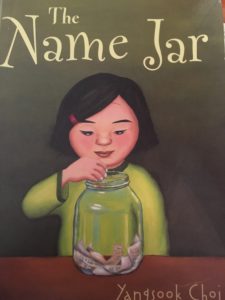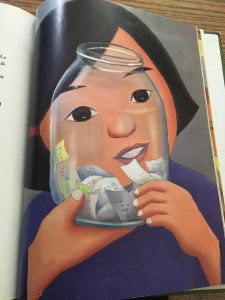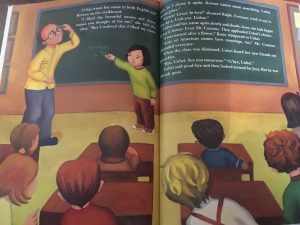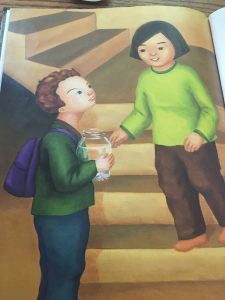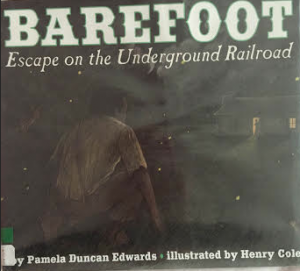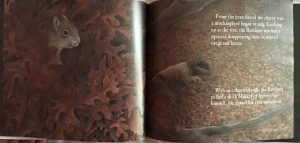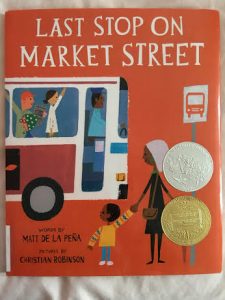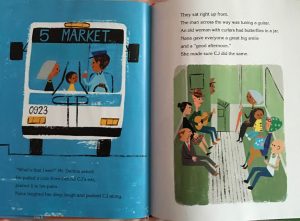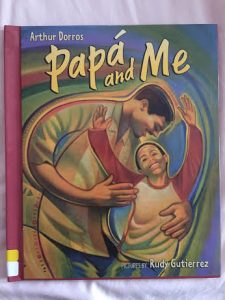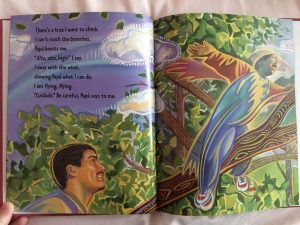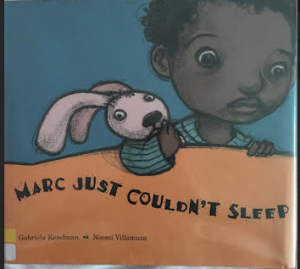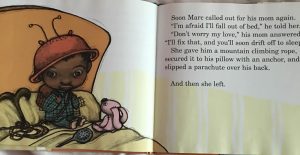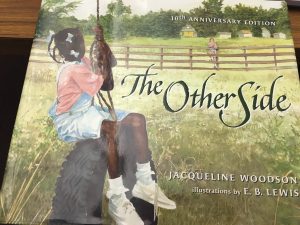
Title: The Other Side
Author: Jacqueline Woodson
Illustrator: E.B. Lewis
Publisher: G.P. Putnam’s Sons, 2001
Number of pages: 32 Pages
Tags: Culture, Diversity, Emotion, Friendship, Historical Fiction, Picture Book, K-5, Stephanie Prentice
Genre: Historical Fiction
Analysis
Clover’s mother will not allow her to cross the fence that separates the African-American side of town from the White side of town where Anna lives because she claims it is not safe. After spending the summer wondering why she is not allowed to cross the fence, Clover gets closer and closer to the fence. Eventually, Clover begins talking to Anna and their friendship grows despite Clover’s moms wishes.
This text allows readers to tap into the realities of African-Americans during the Civil Rights Movement. Clover’s mother is hesitant to allow her to cross into the White part of town because of safety concerns. The depictions of African American as well as American girls allows readers to see themselves and their culture. Despite the common belief that all African Americans during this time period are poor and unprivileged, the illustrations shows Clover and her mother nicely dressed while walking through town. The pictures are very realistic, which mirrors the idea that racism and prejudice is a very realistic problem. The author also discusses the fact that Clover’s mother has bought her toys to play with inside on rainy days. The story seems to take place in a rural setting, which was usually where segregation was heavy during this time period. The power seems to lie in the hands of the White side of town because of Clover’s situation. This story acts as a door because it inspires readers to knock down the fences in their own lives.
Perceptually, the images are usually only one page with the text on the other. The first and last pages have images that cover a double page spread. Especially on the last page, the double spread picture symbolizes the growth that took place within the story. The growth of Clover and Anna’s friendship is symbolized in the pictures. At the beginning, there is tension and distance 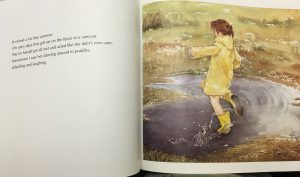 between both girls. As they continue to talk, the girls move closer together. In the story, the fence is a physical barrier between the interaction of the African American and the White populations. It also symbolically represents the barriers that people, especially African Americans, face in their lives. This title, The Other Side, also refers to another aspect of the story. This story features a main character that questions why racism and prejudice are ruling people’s lives. In this case, the character is the person on the other side of the powerful race during this time. This powerful theme carries into other aspects of life. Readers will benefit from the tolerance displayed in the story.
between both girls. As they continue to talk, the girls move closer together. In the story, the fence is a physical barrier between the interaction of the African American and the White populations. It also symbolically represents the barriers that people, especially African Americans, face in their lives. This title, The Other Side, also refers to another aspect of the story. This story features a main character that questions why racism and prejudice are ruling people’s lives. In this case, the character is the person on the other side of the powerful race during this time. This powerful theme carries into other aspects of life. Readers will benefit from the tolerance displayed in the story.

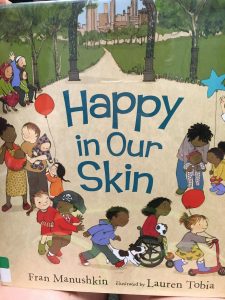
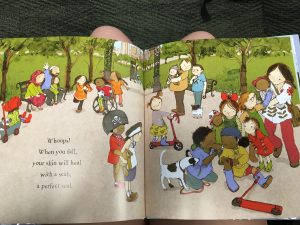 and bright. The images often reinforce the ideas presented in the text, and sometimes act as an enhancement. They show the diversity in skin color and features as well as the physical abilities that are discussed in the text. This book allows for children to see that each person has the same physical feature, skin. It teaches them the importance of skin and how it helps our body. This allows for an easy opportunity for educators or parents to have discussions about race. It teaches the importance of tolerance and acceptance of others who may look different. The illustrations radiate the idea of acceptance, as we see children of all ethnicities and cultures interacting in public places.
and bright. The images often reinforce the ideas presented in the text, and sometimes act as an enhancement. They show the diversity in skin color and features as well as the physical abilities that are discussed in the text. This book allows for children to see that each person has the same physical feature, skin. It teaches them the importance of skin and how it helps our body. This allows for an easy opportunity for educators or parents to have discussions about race. It teaches the importance of tolerance and acceptance of others who may look different. The illustrations radiate the idea of acceptance, as we see children of all ethnicities and cultures interacting in public places.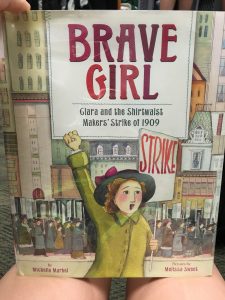 Author: Michelle Markel
Author: Michelle Markel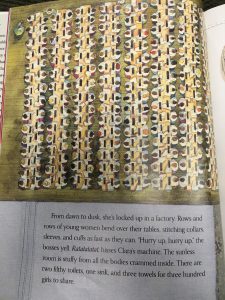 r example, when Clara arrives in America on the boat, the illustrator included an image of the long line of people waiting on the boat for their new life in America. The text is displayed on a stitched piece of fabric that connects to the main theme of the story very well. The pictures are often sewn into the text, making them resemble a quilt. Clara is often found looking or moving to the right of the page, signifying the change that is going to happen. The author uses many adjectives that emphasize the struggles Clara and her colleagues faced. For example, when Clara first arrives, the author introduces her as dirt poor and five feet tall. Ideologically, this story has many things that children can take away after reading. First and foremost, this book gives the students a historical look into the life of immigrants, especially those of women. This book focuses on the hardships and challenges that Clara faced with work and learning to speak English. Secondly, it shows students how important it is to stand up for what they know is right. If Clara were not to stand up for what she believed was right, many workers would have suffered for a longer period of time. Even after Clara faced many arrests, beatings, and threats to be fired, she kept the fight for her rights alive. It proves that determination and perseverance can lead to change for what is right. At the end of the book, readers are introduced to more information about the garment industry that can further their understanding on the topic.
r example, when Clara arrives in America on the boat, the illustrator included an image of the long line of people waiting on the boat for their new life in America. The text is displayed on a stitched piece of fabric that connects to the main theme of the story very well. The pictures are often sewn into the text, making them resemble a quilt. Clara is often found looking or moving to the right of the page, signifying the change that is going to happen. The author uses many adjectives that emphasize the struggles Clara and her colleagues faced. For example, when Clara first arrives, the author introduces her as dirt poor and five feet tall. Ideologically, this story has many things that children can take away after reading. First and foremost, this book gives the students a historical look into the life of immigrants, especially those of women. This book focuses on the hardships and challenges that Clara faced with work and learning to speak English. Secondly, it shows students how important it is to stand up for what they know is right. If Clara were not to stand up for what she believed was right, many workers would have suffered for a longer period of time. Even after Clara faced many arrests, beatings, and threats to be fired, she kept the fight for her rights alive. It proves that determination and perseverance can lead to change for what is right. At the end of the book, readers are introduced to more information about the garment industry that can further their understanding on the topic.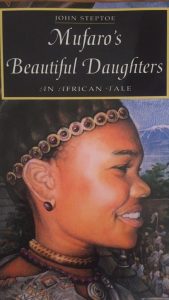
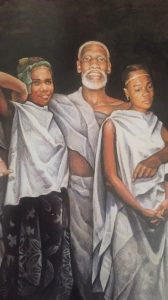
![IMG_9620 [405977]](https://blogs.iwu.edu/lrbmt2016/files/2016/05/IMG_9620-405977-300x238.jpg)
![IMG_9621 [405978]](https://blogs.iwu.edu/lrbmt2016/files/2016/05/IMG_9621-405978-300x238.jpg)
